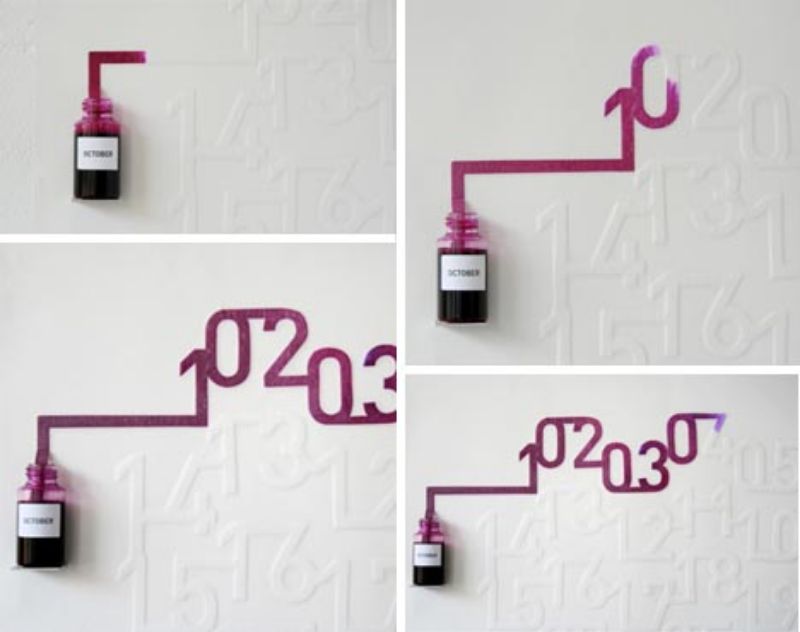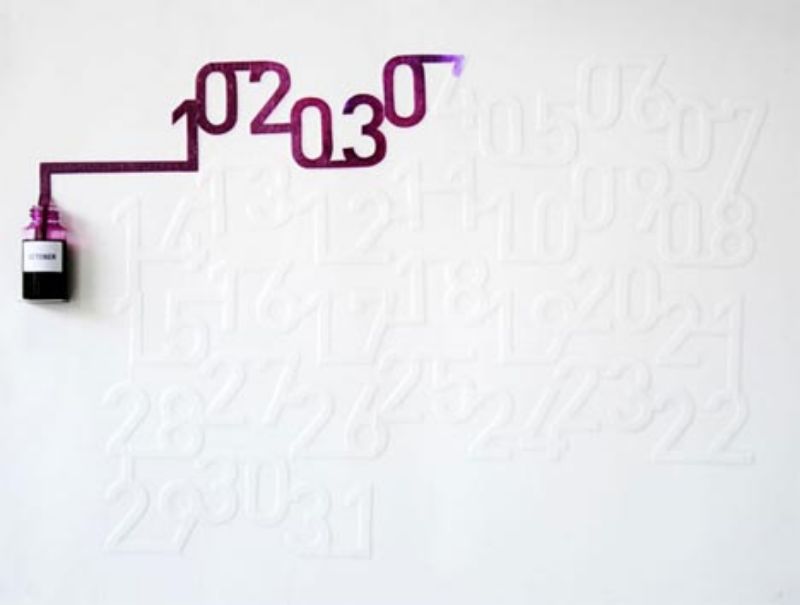Unique Paper Calendar Sucks Up Ink to Display the Date

As cool as its designs may be, the average paper calendar is rarely up to the challenge of fitting in with well-designed interior spaces – usually they are more eyesore than wall art. The dates in this design, however, are automatically populated as ink crawls organically along the surface of what amounts to a perpetual wall calendar – you can literally watch time go by.
This ingenious-but-simple low-tech solution by Oscar Diaz uses the natural capillary action of liquid to move ink along the imprinted surface, slowly filling in the blank white calendar day-by-day for an entire month. New months can be done in different seasonal colors with a blank embossed slate to start with each time, though temperatures call for different ink mixtures depending upon specific climactic conditions (such as temperature and humidity).

“The ink colors are based on a spectrum, which relate to a ‘color temperature scale,’ each month having a color related to our perception of the weather that month. The colors range from dark blue in December to, three shades of green in spring or oranges and red in the summer. The scale for measuring the ‘color temperature’ that I have used is a standard called ‘D65’ and corresponds roughly to a midday sun in Western / Northern Europe.”
About the designers
“Oscar Diaz Studio is a London based design studio working in the field of product design. We believe design stands right between culture and commerce, and culture informs everything we design. The studio approach is practical, hands-on and collaborative. We understand design as an iterative process. The studio work is characterized by a plain, playful and innovative take on everyday objects. The studio doesn’t have a style, favorite material or formula, and consider design as a craft, where a deep understanding of materials, processes and behaviors make an object. While challenging assumptions, each project proposes simple solutions which often contain a narrative aspect.”




